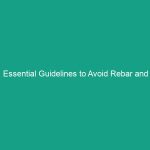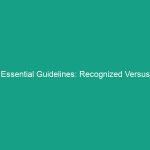Introduction
In today’s fast-paced work Environment, the significance of Health, Safety, and Environment (HSE) practices cannot be overstated. HSE is not just a compliance requirement; it is a fundamental aspect of ensuring the well-being of employees and the Sustainability of operations. One critical area that often requires attention is the concept of a “trip.” A trip can occur in various forms, from physical accidents in the workplace to metaphorical trips in the form of regulatory missteps or Safety oversights. In this article, we will delve into essential trip guidelines, emphasizing how to avoid critical risks for Safety.
Understanding Regulatory Frameworks
Regulatory frameworks form the backbone of Workplace Safety protocols. These guidelines are essential in establishing Standards that protect employees from Hazards. In the context of trips, regulatory bodies like the Occupational Safety and Health Administration (OSHA) in the United States and the Health and Safety Executive (HSE) in the UK provide frameworks that address potential risks associated with trips.
Key Regulations Impacting Trip Safety
Several key regulations specifically address the risks of trips and falls in the workplace. For example, osha mandates that employers maintain a safe working environment, which includes managing slip, trip, and Fall Hazards. These regulations require employers to regularly assess their workspaces for potential risks and implement necessary controls.
The Importance of Compliance
Compliance with these regulations is crucial not just for legal reasons but also for fostering a culture of safety within the organization. Non-compliance can lead to severe penalties, including fines and increased insurance premiums, but more importantly, it can result in injuries that affect employees’ lives. Therefore, understanding the regulatory frameworks around trips is the first step in ensuring a safer workplace.
Best Practices for Trip Prevention
To mitigate the risk of trips, implementing Best Practices is essential. These practices involve proactive measures that organizations can adopt to create a safer environment for all employees. Here are some essential guidelines to consider:
Conduct Regular Risk Assessments
Regular risk assessments are vital for identifying potential trip Hazards in the workplace. By systematically evaluating work areas for uneven surfaces, clutter, and poor lighting, employers can address issues before they result in accidents. Involving employees in these assessments can also provide valuable insight, as they are familiar with the daily challenges they face.
Implement Effective Training Programs
Training employees on Safe Practices is another cornerstone of trip prevention. This includes educating them about the importance of keeping walkways clear, using proper footwear, and reporting hazards promptly. Regular training sessions not only enhance awareness but also empower employees to take ownership of their safety.
Maintain a Clean and Organized Workplace
A clutter-free workspace is essential in minimizing trip risks. Ensuring that all areas are clean and well-organized can significantly reduce the likelihood of accidents. This includes managing cords, tools, and materials to prevent them from obstructing walkways.
Utilize Appropriate Signage
Clear signage can play a crucial role in trip prevention. Signs indicating potential hazards, such as wet floors or uneven surfaces, alert employees to be cautious. Furthermore, directional signage can help guide employees safely through the workspace, reducing confusion and the chances of trips.
Case Studies: Learning from Real-World Incidents
Analyzing real-world incidents can provide valuable lessons in trip prevention. Several organizations have faced serious consequences due to trip-related accidents, highlighting the importance of addressing such risks effectively.
Case Study 1: Construction Site Incident
In a well-documented case at a construction site, an employee suffered a severe injury after tripping over exposed rebar. The investigation revealed that the site had not been adequately assessed for trip hazards, and proper Safety Measures were not in place. As a result, the company faced not only legal repercussions but also a loss of employee trust and morale. This incident underscores the need for rigorous safety protocols and regular site evaluations.
Case Study 2: Office Environment Risks
Another example comes from an office environment where an employee tripped over unsecured cables that ran across the floor. The company had not implemented a cable management system, leading to injuries and subsequent workers’ compensation claims. This situation illustrates how seemingly minor oversights can lead to significant consequences, emphasizing the importance of maintaining a safe and organized workspace.
Challenges in Trip Risk Management
Despite the best intentions, various challenges can arise in managing trip risks effectively. Recognizing these challenges is the first step in overcoming them and creating a safer workplace.
Employee Engagement
One of the primary challenges is ensuring employee engagement in safety practices. While training is essential, employees may not always feel motivated to adhere to safety protocols. Creating a culture of safety where employees feel valued and responsible for their well-being is crucial. This can be achieved through recognition programs and open communication about safety concerns.
Resource Allocation
Another challenge is resource allocation. Many organizations struggle to allocate sufficient resources for safety training and infrastructure improvements. This can lead to inadequate Safety Measures, increasing the risk of accidents. Organizations must prioritize safety as a core value and allocate appropriate resources to support it.
Keeping Up with Regulatory Changes
The regulatory landscape is constantly evolving, and keeping up with these changes can be daunting. Organizations must stay informed about new regulations and ensure their safety protocols align with current standards. Regular training and updates can help mitigate this challenge.
Future Trends in Trip Risk Management
The future of trip risk management is likely to be shaped by technological advancements and a growing emphasis on employee wellness. Organizations that embrace these trends will be better positioned to enhance safety and reduce risks.
Technology Integration
Technology is playing an increasingly significant role in Workplace Safety. Innovations such as wearable sensors can monitor employee movement and detect potential trip hazards in real time. Additionally, virtual reality training programs can provide immersive experiences that enhance safety training effectiveness, making employees more aware of potential trip risks.
Focus on Mental Health
As organizations recognize the importance of holistic employee well-being, mental health is becoming a focal point. Stress and fatigue can lead to decreased attention and awareness, increasing the likelihood of trips. By promoting mental health initiatives and encouraging work-life balance, organizations can create a safer and more productive environment.
Conclusion
In conclusion, understanding and addressing trip risks is an essential component of Workplace Safety. By following essential trip guidelines, organizations can significantly reduce the likelihood of accidents, fostering a safer environment for all employees. Compliance with regulatory frameworks, implementing Best Practices, learning from case studies, and adapting to future trends are all critical steps in this process. As we move forward, let us prioritize health, safety, and environmental considerations to ensure that every employee can perform their job without the fear of injury. Together, we can create a culture of safety that not only meets regulatory requirements but also enhances overall productivity and employee satisfaction. Take action today to ensure your workplace is safe and secure!


